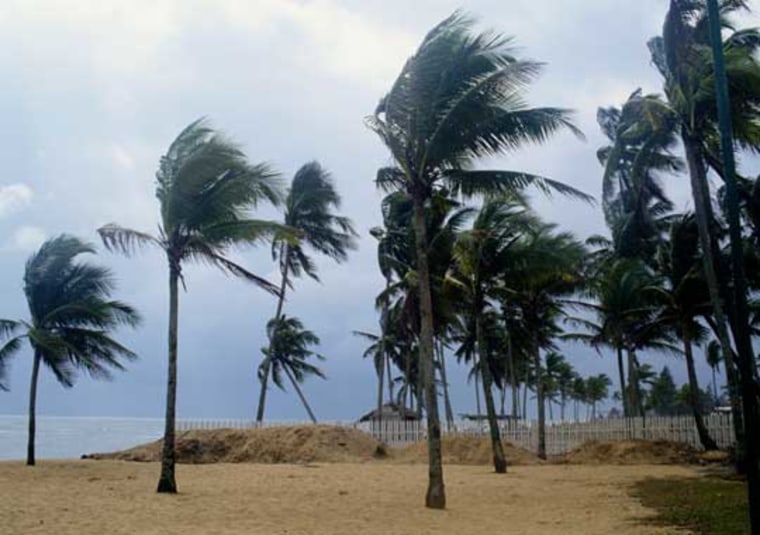Hurricanes leave their mark with more than just wind damage and flooded lives. According to new research in the North Atlantic Ocean, these powerful storms also make a small but detectable mark on the rhythm of the Earth's background noise.
The discovery may help scientists detect previously undocumented hurricanes in the planet's past. Getting a more accurate picture of that stormy past, researchers hope, may finally help determine whether hurricanes are becoming more frequent or more powerful as a result of global warming.
Some evidence suggests a connection, but no one knows for sure, mostly because the records are so spotty.
"We know sea surface temperatures are rising, and we know hurricanes need warm sea surface temperatures," said Carl Ebeling, a geophysicist at Northwestern University in Evanston, Ill. "No one has a good way to say if there is a reflected trend in North Atlantic hurricanes and how often or energetic they are."
Detailed hurricane records go back only about 50 years. Scientists started using satellite technology to monitor the storms in the 1960s. Before that, people reported hurricanes from ships, airplanes, and stations on land. But people most likely missed the storms that stayed offshore or died out before being spotted.
Because hurricanes transmit energy from the atmosphere into the oceans and from there into solid ground, Ebeling wondered if the storms might leave a mark on seismic records. Seismographs measure underground motion as waves, with frequency and amplitude that vary like the pitch and volume of sound waves.
Large spikes in the data reveal earthquakes and scientists have used seismic records to detect earthquakes in Earth's past. Smaller variations in the background noise, on the other hand, have long been considered irrelevant.
"Seismic noise has been ignored for so long because people thought it got in the way of earthquakes," Ebeling said. "If you think about what's going on in the background all the time with those small up and down wiggles, there's always something in there."
When Ebeling and colleague Seth Stein analyzed digital seismograms reaching back into the early 1990s, they were able to identify distinct wave patterns that coincided with known hurricanes. Those patterns looked different from records collected during smaller storms.
By looking at data from two monitoring stations — one in Puerto Rico and one in Harvard, Mass., they were also able to distinguish the big storms from more local ones. During hurricanes, they also found, energy travels surprisingly far. In 1992, the Harvard station picked up signals from Hurricane Andrew, a Category 5 storm that struck more than 600 miles away.
Before scientists can start using seismic patterns to identify past hurricanes that they don't already know about, they will have to overcome some technical hurdles.
To boost the efficiency of record searching, for example, they will need to turn hundreds of thousands of hours of analog data into digital versions. Seismograms didn't start collecting digital data until the late 1980s.
When they find an efficient way to make those conversions, the wealth of information should help answer some questions, said Phil Klotzbach, an atmospheric scientist at Colorado State University in Fort Collins.
"To the best of my knowledge, no one has used seismic records to reconstruct hurricane records," Klotzbach said. Along with other strategies, he said, the technique might help scientists look further back in time. "It adds a fresh new look at things."
